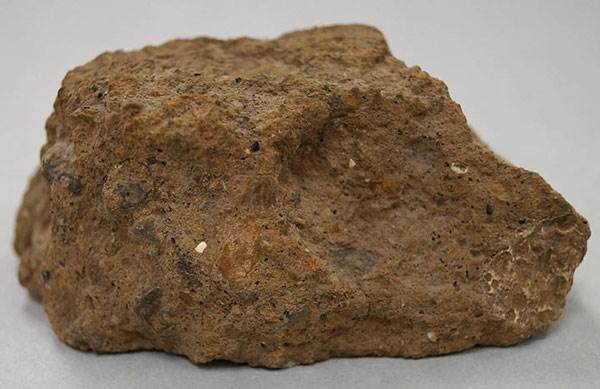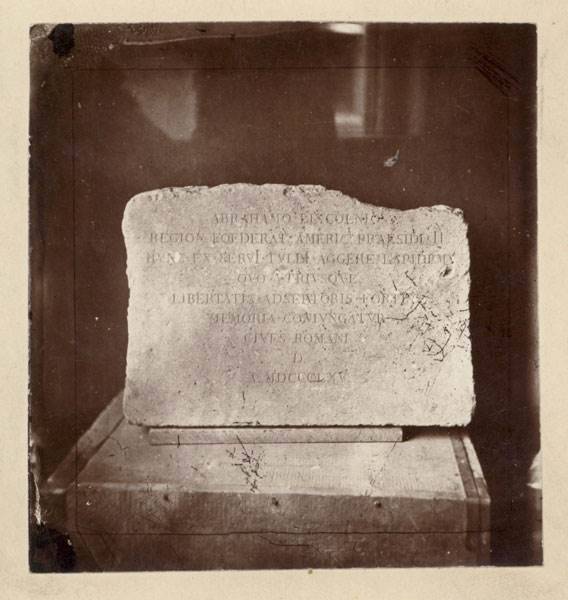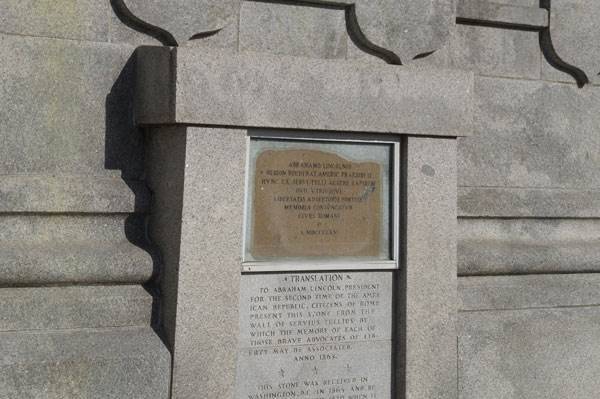The Civil War was, by definition, a national event but the world was watching. Some observers sought to influence the course of the war, but others saw it as part of a global campaign against slavery and oppression. Many heralded the Emancipation Proclamation as a major step in the progress of freedom and rejoiced when Congress passed the 13th Amendment in January 1865, setting America on a path to permanently eradicate slavery.
Italy was engaged in a sort of civil war of its own in the mid-1800s. Different geographic factions were fighting to unify the Italian peninsula and expel foreign empires, especially France and Austria. That conflict was in a bit of a lull while America fought its own battle for unification, and Italy's most famous patriot and republican military leader, Giuseppe Garibaldi, almost accepted a Union military command. Ultimately, Italy did not offer the Union significant amounts of material or manpower, but Italians did endorse the cause.
 (Abraham Lincoln Presidential Library and Museum)
(Abraham Lincoln Presidential Library and Museum)
This simple stone is a testament to Italy's regard for Abraham Lincoln and America's rising global status as an anti-slavery nation. It is a small piece of the Servian Wall in Rome. Ancient Romans built this fortification around the 4th Century BCE and it protected the city for about seven hundred years, becoming a symbol of Roman republicanism, freedom, and independence.
As a sign of mourning following Lincoln's assassination, a group of Italians sent a slab from the Servian Wall to Washington. It is inscribed in Latin, with a translation that reads: "To Abraham Lincoln, President for the second time of the American Republic, citizens of Rome present this stone from the wall of Servius Tullius by which the memory of each of those brave advocates of liberty may be associated."
 The piece of the Servian Wall as it originally appeared (Abraham Lincoln Presidential Library and Museum).
The piece of the Servian Wall as it originally appeared (Abraham Lincoln Presidential Library and Museum).
So, what happened to the rest of the slab? After it's trip across the Atlantic, Italy's gift embarked on a strange journey of its own. Records show it was displayed for a time in Washington, before eventually finding its way to Illinois. The state may have intended to put it on display, but those plans must have been interrupted, because it remained in storage until an Italian minister alerted Illinois Governor and Lincoln collector Henry Horner to its existence in the 1930s.
Understanding the symbolic weight of the gift, Horner ordered it to be placed on the façade of the Lincoln Tomb, where it remained for several decades. Rain eventually wore away the inscription and caretakers removed the slab for repair. During that restoration, this piece broke off and found its way into the Abraham Lincoln Presidential Library and Museum's collection. It is our oldest item.
The restored original slab still sits—now under protective glass—on the front of the Lincoln Tomb. You can see it on the raised platform above the front entrance. Both it and this small piece are poignant reminders of Lincoln's vast international legacy.
 The Servian Wall slab as it appears today at the Lincoln Tomb (Abraham Lincoln Presidential Library and Museum).
The Servian Wall slab as it appears today at the Lincoln Tomb (Abraham Lincoln Presidential Library and Museum).
The Servian Wall stone is currently on display in the Tide Turns cases at the Abraham Lincoln Presidential Library and Museum.